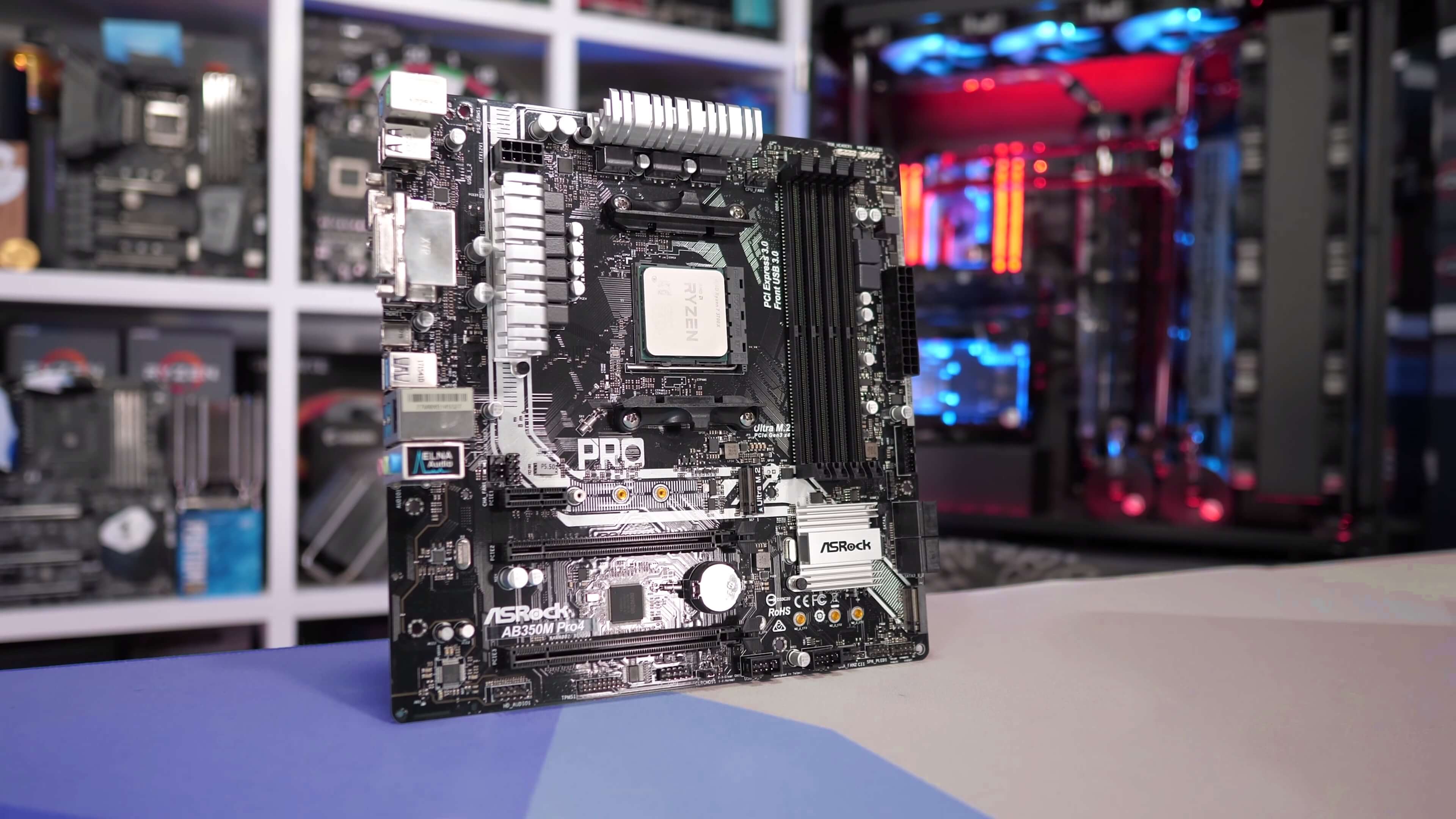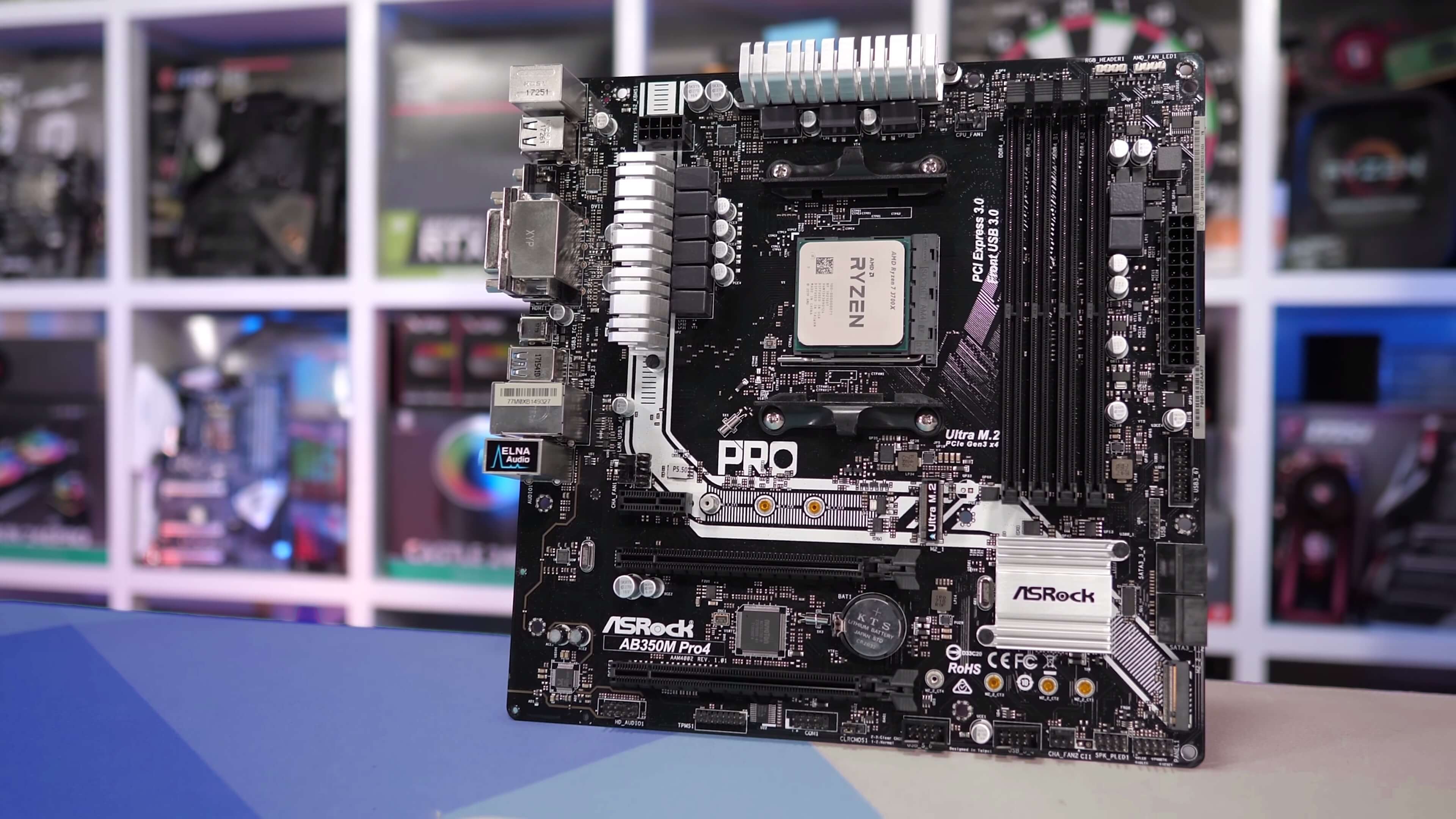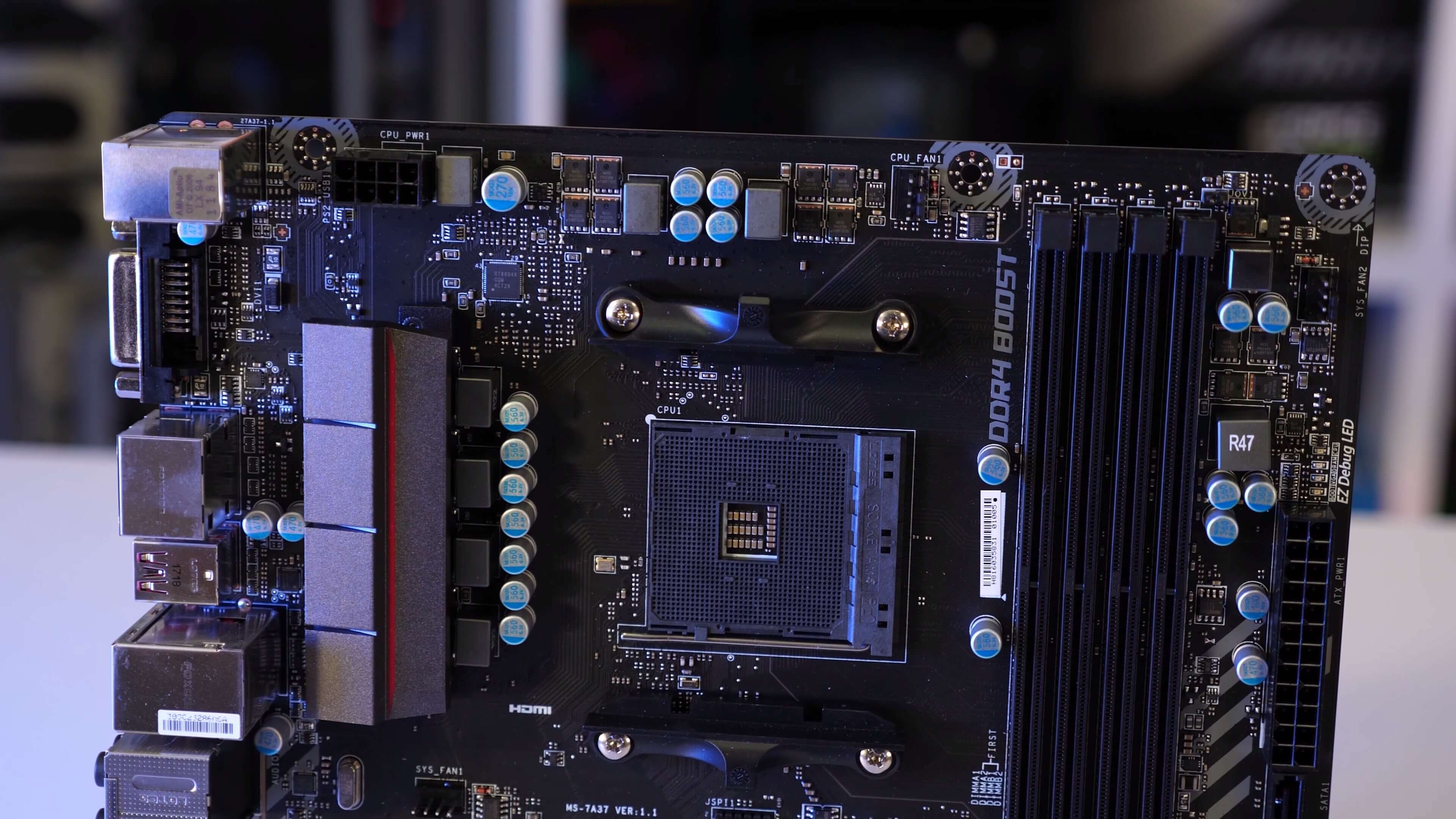Surely you've read our 3rd-gen Ryzen review by now, including our look at the budget $200 Ryzen 5 3600 model. While testing that we posed the question, how well will these processors work on a really affordable B350 motherboard? The test subject for this experiment is the Asrock AB350M Pro4. Why this particular Micro-ATX motherboard, you ask? It's simple, this was one of our top picks for the best 'ultra cheap' B350 motherboard, coming in at just $75... it was a steal back in 2017.
It's also a great candidate for our 3rd-gen Ryzen testing on a B350 board because it is as bare as they come. It packs a 3-phase vCore VRM using the 4-phase ISL95712 controller, but we do get a doubling of components, so each phase features two high-side MOSFETs and two low-side MOSFETs. In that sense it's pretty decent for a sub-$100 AM4 motherboard.
Now in this article we want to investigate mainly two things: Can a budget B350 motherboard safely support the Ryzen 9 3900X? For example, how hot does the VRM get during a torture test? We'll be strapping on a few k-type thermocouples to find out.
Then assuming we don't cook the board, what's the performance like? Are there any thermal issues, power limitations, or anything else that may be limiting performance? We'll be testing the 3900X, 3700X and the vanilla 3600 on the Asrock board and then compare the results to those gathered on the MSI X570 Creation.
Using BIOS version 5.90 the Asrock AB350M Pro4 supports Zen 2 processors using AGESA version 1.0.0.1. The MSI X570 Creation was tested using the latest BIOS which uses AGESA version 1.0.0.3. This version was used for all previous testing and performs as expected.
Benchmarks
First up we have VRM temperatures and we'll look at a worst case scenario first – at least until the Ryzen 9 3950X is released. We don't expect many will be looking at pairing the 3900X with an entry-level B350 board, but it's useful information for a few years down the track, at which point you'll likely be able to snag the 12-core part for peanuts.
All this testing has been conducted on an open test bench with no additional cooling, however it's not that unrealistic as we're using the box cooler which directs air over the VRM heatsink, at least one of them anyway. This setup has the advantage of cool air circulation as it's not stuffed in a poorly ventilated case, with the disadvantage that there's no direct air-flow from case fans.
Stock the Ryzen 9 3900X sucked down 145 watts and this pushed VRM temps to peak at 65 degrees for the underside of the PCB where most of the heat is dissipated while the top side of the MOSFET driver peaked at just 51 degrees. Both are very safe operating temperatures for these components and with 8 sensors we covered the board very well, what you see here are the hot spots.
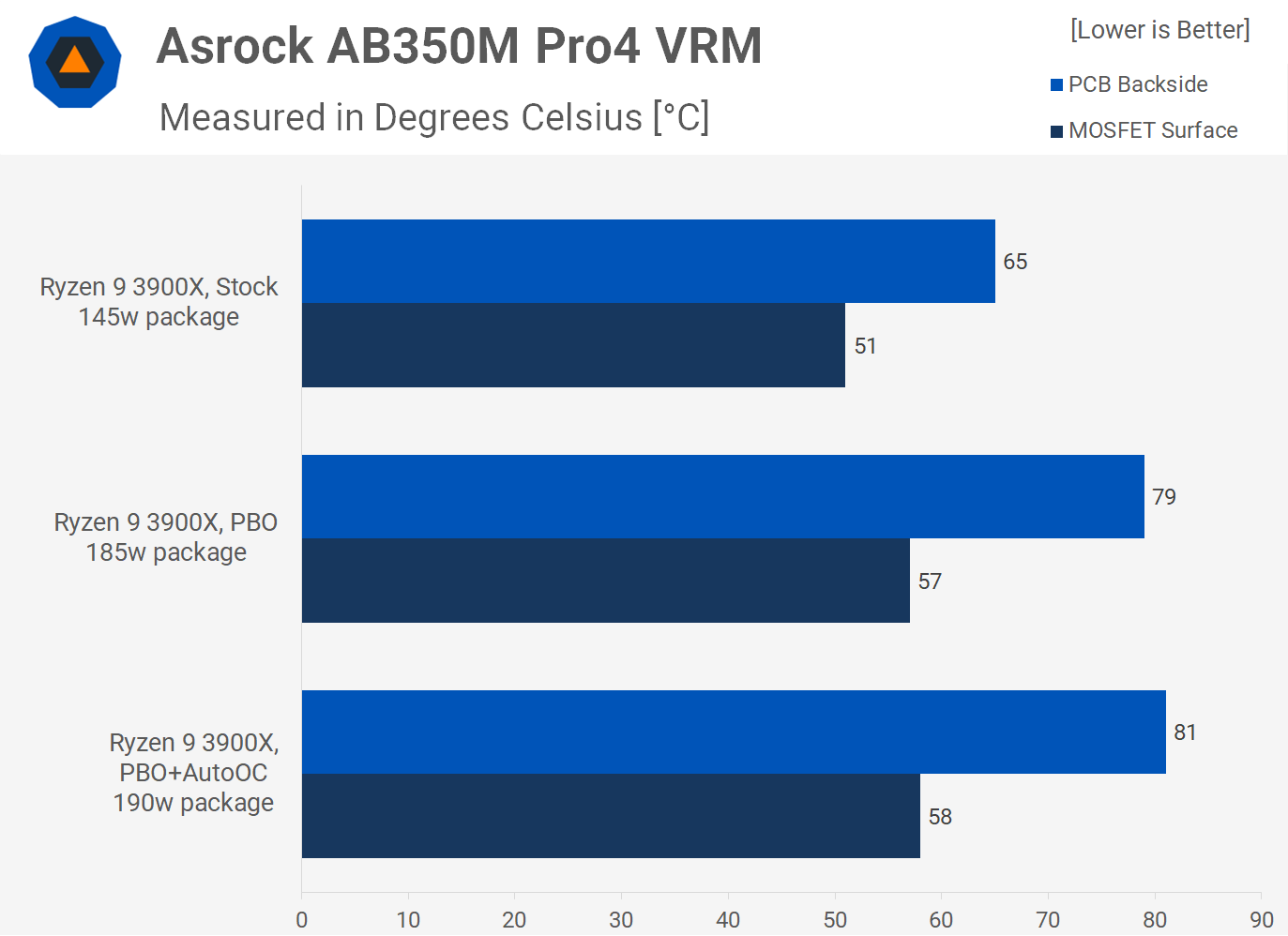
Enabling PBO with the box cooler is rather pointless, all it does is increase power consumption while resulting in almost no extra performance. Still, it does stress the VRM more, so for this test we are interested in doing exactly that. This increased the package consumption to 185 watts, a 28% increase in power draw. The peak temperature on the underside of the PCB increased by 22% and we see the board get up around 80 degrees.
Although these temperatures aren't dangerous, they're getting a bit too hot to sustain for long periods of time. The board is also right on the edge now and with PBO+AutoOC enabled in the Ryzen Master software, the Asrock AB350M Pro 4 did come unstuck.
The board didn't suffer a major failure or crash, but the Blender 1-hour stress test closed down to the desktop after about 20 minutes, this happened 3 times in a row, so we took the hint and gave the little B350 board a rest.
In short, it looks like the Asrock AB350M Pro4 can comfortably deliver 150 watts but once you start pushing up over 180 watts, it wants to pack it in.
Moving over to the 65 watt TDP Ryzen 7 3700X, the B350 board didn't break a sweat. Sadly, we didn't measure package power consumption with this processor, we simply didn't think of it at the time and this was before we tested the 3900X. But even with PBO+AutoOC enabled the 3700X ran flawlessly on the Asrock B350 board and VRM temps only peaked at 46 C which is very safe. That being the case, we didn't waste time testing the Ryzen 5 3600 as it's not going to stress the VRM.
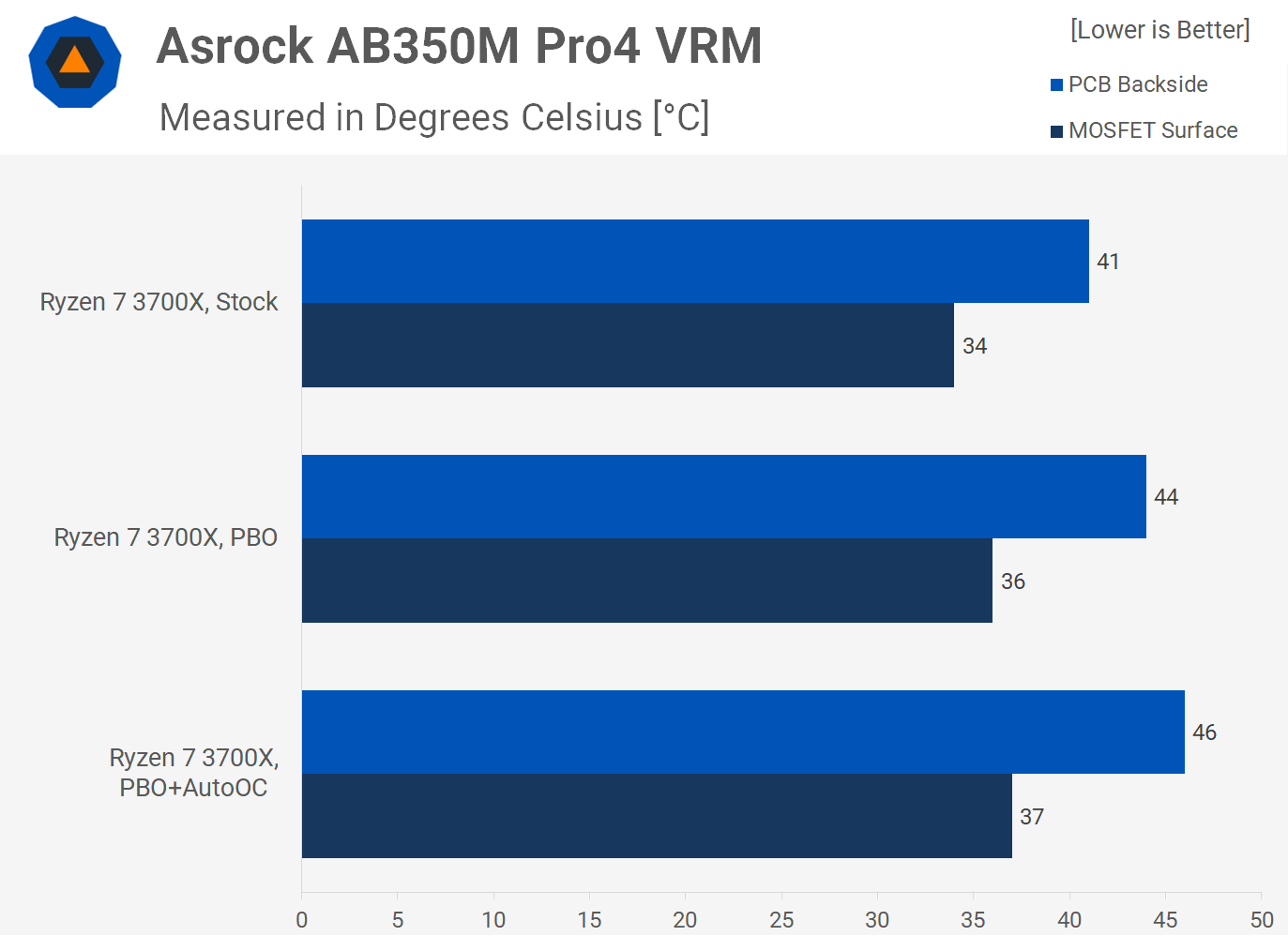
Actually, we did encounter one issue with the R5 3600: memory support was a bit flaky. Whereas the Ryzen 5 processor works with DDR4-3600 memory on the X570 boards, it only worked up to DDR4-3000 on the Asrock B350 board. This is interesting as both the 3700X and 3900X worked fine with DDR4-3200 on the Asrock board, though DDR4-3600 didn't.
In other words, memory support isn't nearly as good as on X570, but that was almost certainly going to be the case. It's possible future BIOS revisions will enhance memory support, but it's just as likely the signal quality on the AB350 Pro4 isn't good enough to go beyond DDR4-3200 and for lower quality binned CPUs even 3200 is out of the question.
This means for the benchmarks you're about to see the 3900X and 3700X were tested using DDR4-3200 CL14 memory, while the 3600 was tested with DDR4-3000 CL14 memory.
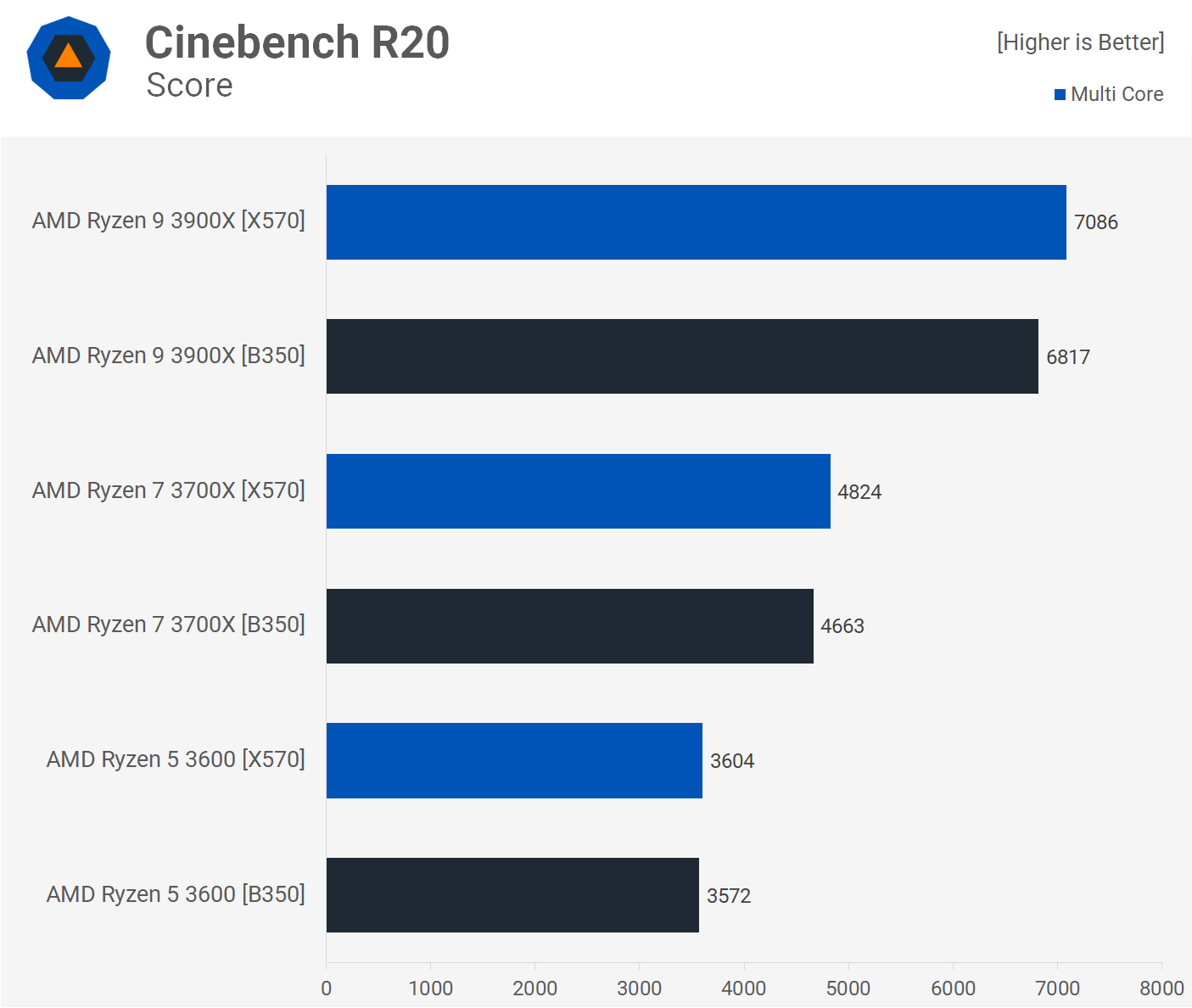
Despite the change in memory frequency, the R5 3600 sees the smallest performance discrepancy between the two boards tested. The X570 boards were just under 1% faster, so chalk that up to margin of error.
The 3700X was 3% faster on the X570 board, not a big margin, but it was consistently 2-3% faster. Then we see the 3900X was 4% faster on the X570 board... which also costs around 7 times more.

When testing with Blender we noted the typical all-core clock frequency jumped around a little, but after half an hour it settled into the clock speeds you see reported here. Basically the 3900X clocked 2.5% higher on the X570 board, the 3700X clocked 2.7% higher and the R5 3600 clocked 0.1% higher.
In short, performance was the same for the R5 3600, the 3700X took 2% longer to complete the test and the 3900X took 4% longer, much in line with the margins seen in Cinebench.

This time when testing with V-Ray the 3900X was 5% faster on the X570 board while the 3700X was just 3% faster and we see the R5 3600 performing 1% better on the B350 board. Anything around 3% or less is within the margin of error.
Gaming Tests

As for gaming performance the R5 3600 was again able to deliver the same level of performance on both boards, the same was true for the 3700X, while the 3900X dropped a few frames.

Assassin's Creed Odyssey is a much more demanding game on the CPU and here the 3900X and 3700X were 4% faster on the X570 board, while the R5 3600 saw no real difference.
Power Consumption
Finishing up the benchmarks we have total system power consumption while running the Blender test. The 3900X saw total system consumption drop by 10%, 16% for the 3700X and 11% for the 3600.
There are likely a few reasons for this. The high-end X570 boards might waste more power due to their extreme VRM implementations, we know the X570 chipset uses quite a bit more power and these boards are generally littered with RGB LEDs, though the MSI Creation is good in that regard. Either way it seems AMD's Zen 2 CPUs are more power efficient on 300 and 400 series boards.

Closing Notes
The good news for those who own entry-level AM4 motherboards is that they can easily handle the new 3rd-gen Ryzen processors, from the R5 3600 all the way up to the Ryzen 9 3900X. We observed no issues with the exception of questionable memory support, though that wasn't new from 1st and 2nd-gen Ryzen parts.
The Ryzen 9 3900X works fine in its out of the box configuration, but don't expect you'll be able to go overclocking the 12-core CPU. Again, memory support on this particular B350 board was limited to DDR4-3200, but that's all you need to get maximum performance anyway, assuming you're using low latency memory. We don't believe 3900X support is relevant right now, but in a few years' time when you can buy these CPUs second hand for what we're guessing will be around $100-$200, then getting one and sticking it on a cheap B350 board will be a nice option.
As for higher-end B350 boards, we've yet to test any but those with a beefier VRM should be even better, assuming BIOS support is there. We're also in the early days of support on older motherboards, so things could improve. No performance difference should be seen between AGESA 1.0.0.1 and 1.0.0.3, but memory compatibility could be improved, along with stability in general.
We are aware of the challenges AMD and its board partners face due to the promise of backwards-compatibility. For example, the storage capacity of the SPI flash EEPROM chip that stores the motherboard UEFI firmware isn't big enough to fix the latest AGESA microcode, and this is a problem for a number of entry-level and mid-range boards that only use a 16MB EEPROM.
Asrock has made a lite-version of the BIOS that doesn't feature any colors and has a very basic layout. The X570 motherboards have been upgraded to a 32MB EEPROM, no doubt to combat this issue moving forward, though they do drop support for first-gen parts anyway.
The bottom line is AMD's AM4 upgrade path is there to be taken advantage of, sooner or later, your choice.
Shopping Shortcuts:
- AMD Ryzen 9 3900X on Amazon, Google Express
- AMD Ryzen 7 3700X on Amazon, Google Express
- AMD Ryzen 5 3600 on Amazon, Google Express
- AMD Ryzen 5 2600X on Amazon, Google Express
- Intel Core i5-9600K on Amazon, Google Express
- Intel Core i5-9400F on Amazon, Google Express
- GeForce RTX 2070 Super on Amazon, Google Express
- GeForce RTX 2060 Super on Amazon, Google Express
- GeForce GTX 1660 Ti on Amazon, Google Express
